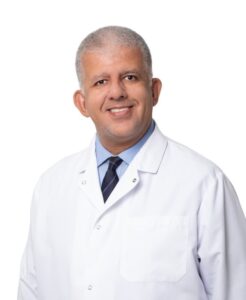
4 tips for serving older patients
As your patients get older, factors beyond brushing and flossing play a significant role when it comes to maintaining a healthy smile. In 2019, there were about 54.1 million people (PDF) aged 65 and over in the United States. By 2040, that number is expected to reach almost 81 million.
We spoke with Dr. Michael Tarighati, our dental consultant with advanced training in geriatric dentistry, about how best to serve this population. Here are four tips he shared that will help your patients in their golden years.

Dr. Michael Tarighati
Know the unique circumstances of all of your patients
Each of your patients is unique, and so are their wants and needs.Take time to listen to your patients and understand what’s important to them before offering treatment recommendations. Provide options in best, better and good categories. Make sure all their questions have been answered and that they understand the proposed treatment recommendations by having them repeat the treatment back to you.
Once you have a better understanding, you can:
- Appropriately schedule them for treatment. Most older patients take a variety of medications, such as Glucophage (metformin) for diabetes and to avoid hypoglycemia, so it’s often best to work on them in the morning hours. Make sure you give these patients breaks in between treatment and don’t book lengthy appointments.
- Have patients disclose their medications to be aware of potential side effects. Antihypertensive medications, such as beta blockers, can cause dry mouth (xerostomia). Antiseizure medications, such as Dilantin (phenytoin), can cause gingival hyperplasia. Sugars in over-the-counter medications can cause tooth decay. Always cross check potential drug-drug interactions.
- Watch for early warning signs of chronic conditions. Many conditions, such as diabetes, may present orally before patients begins to experience other symptoms. Through comprehensive intraoral exam, you’ll become aware of such issues before your patients do. As an example, most diabetic patients are susceptible to Class V lesions near the gingival margins. Regular oral evaluations can rule out oral cancer, as well as detect suspicious lesions, sore spots or root caries.
Think about care beyond the dental office
Americans over 65 are keeping more of their teeth, but this has given rise to new challenges. Because of this, it can be useful to think about how you can help patients manage their oral health at home.
- Ask patients about their diets. Use a diet questionnaire to make sure that patients are eating a balanced diet that is supplemented by vitamins where necessary. Vitamin B-12 deficiency is prevalent in this age group and can cause angular cheilitis and soreness on the corners of the lips.
- Provide written home care instructions. This is especially important for removable and complete denture appliances.Make sure each prosthesis is labelled on the intaglio side.
- Recommend tools to better assist patients with their oral health. Recommend electric toothbrushes for patients with arthritis, prescribing toothpaste with 5,000 PPM fluoride and recommending dry mouth relief lubricants as appropriate.
Make caregivers and helpers part of the conversation (with permission!)
Many adults 65 and older will need some form of long-term care services in their lives. About 80% of this care is likely to come from volunteer sources, such as friends or family. These caregivers may be a valuable resource when it comes to helping your patients, as they can provide insight into schedules, at-home routines, mental, emotional, and physical well-being and more.
In cases where a patient is transported to your office by an assisted living facility or nursing home, make sure to communicate the patient’s treatment plan (including alternative options), procedure details and post-operative instructions in a simple, written format. If a patient has a legal guardian, including one assigned by the state, communicate their care information and obtain the guardian’s consent before proceeding with the treatment. If such a patient doesn’t have a legal guardian, be sure that a signed informed consent is on file. To stay in compliance with the Health Insurance Portability and Accountability Act, don’t share such information with anyone else unless agreed to by the patient.
Emphasize accessibility
Making your practice accessible is especially important for aging patients. With the right technology and some consideration, you can make it easy for everyone to get the care they need.
- Make the most of technology. Aim to make your website more accessible for patients with screen reading software, using larger fonts, alt-text descriptions for images and the thoughtful use of color and descriptive text for links. You can also offer teledentistry consultations with services like Delta Dental – Virtual Consult. Many older adults have smartphones and are used to using them, but you should still make sure to explain the installation of the application so that patients can get the most from its features. Be patient, as some individuals may need extra assistance with technology.
- Consider the needs of your hard-of-hearing patients. Speak slowly, clearly, and directly to make it easier for them to read your lips. Allowing appointment scheduling by text, email, or social media can also make it easier for patients with hearing loss to communicate with you.
- Make information accessible to blind and low-vision patients. When caring for patients with vision loss, verbally state any information they should know, such as your name and what procedures you will be performing.
Finally, for every patient, don’t forget to tell them about online resources such as the Grin! newsletter and the wellness library! These resources are full of informative articles that cover tips for maintaining oral health, overall wellness and more.
Recent posts
- Updated 2026 CDT codes are here
- Partner with us to improve the health outcomes of our shared members
- Say hello to our 2026 Medicare Advantage DHMO partners
- Say hello to our 2026 Delta Dental Medicare Advantage™ PPO partners
- Insights from Dr. Allen Edwards on oral cancer detection and prevention
- Create a PPO strategy for your dental practice
- Dr. Brian Hathcoat — how a career change and a commitment to service made a positive impact
- Menopause and the mouth: What our survey results are saying
- Ready, set, authenticate with multi-factor authentication
- Partners in care: Reduce patient grievances with our on-demand webinar
